The urinary catheter is given for a variety of reasons during labor. Can you refuse it though? What happens if you do? Today we’re going to talk about WHY you might need one, and why you might want to refuse it — or what other options you could have.
Before we get going — do you have a birth plan yet? Grab my free series here:
A note on the word “catheter” — in the hospital we use it for any tube. So, your IV has a catheter, as does your epidural. In this article we’re just talking about the urinary catheter.
If you want more info on what they are I have a whole post on foley catheters.
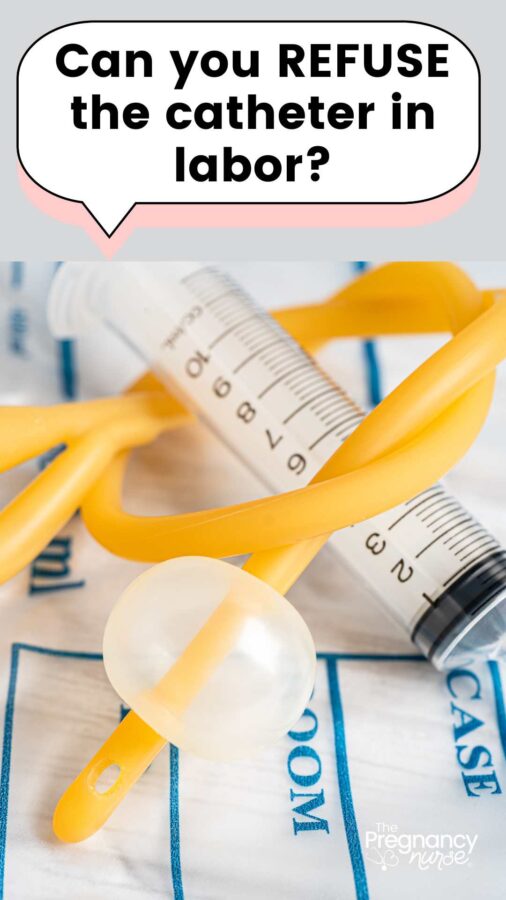
Why Would you Get a Urinary Catheter In Labor
It’s REALLY important you understand WHY we might need a catheter in labor — and why sometimes it is VERY important, and refusing it should not be taken lightly.
While that post I just linked above has a lot more, most often a catheter is given for a few reasons:
We need to check your urine output.
Sometimes we need to check how your kidneys are functioning. This is most often when you’re sick with something like preeclampsia. At that point your urine output may drop low enough that you peeing in the bathroom is too innacurate — we need something to check even just like 20 cc/hour — so a catheter (with a urometer that can measure small amounts) is really important.
You Can’t Get Up To the Restroom
In cases where we need you in bed, which mostly includes strict bedrest (might happen if your water breaks early, or you’re in preterm labor) we don’t want you getting up to the restroom.
Most often this doesn’t last long, but just during the stabilization period.
This also happens when you have an epidural where you can’t get up to restroom (because your legs won’t carry you).
In these cases the catheter keeps your bladder empty.
In labor this is important because if your bladder fills up, the baby can’t descend into the birth canal as easily (the bladder gets in the way).
Here’s a few other posts about the epidural you might find helpful:
- Weird Side Effects From The Epidural That No One Talks About
- What To Do If You Can’t Decide If You Want An Epidural Or Not?
- Does Labor Still Hurt With An Epidural?
- How Long Does It Take for the Labor Epidural Anesthesia to Wear Off?
- What Does Having an Epidural Feel Like?
Cesarean Section
The bladder is right in the way of where they do the incision to get the baby out.
If the bladder is full, there is a really good chance they will nick it on their way in. If your bladder is injured like that, it can have serious consequences.
So, it is really important that you have a catheter with a cesarean section.
Here’s a few other cesarean posts you might find helpful:
- Tips if You Are Afraid of a Cesarean
- What To Wear For A Cesarean Section
- How To Prepare For Your C-Section
- 16 C-Section Facts
- Cesarean Section Anesthesia
You Can’t Pee
In some cases (this happens more right after baby is born) you’re unable to pee. If your bladder fills up that could make it tough on the baby, bad for the bladder or, postpartum, it can make your uterus unable to clamp back down which can cause bleeding.
Risks of the Catheter
The main risks of a catheter (and I’ll admit we don’t do as good of a job talking about these because they’re sort of “included” in other procedures like a cesarean or an epidural) include: Infection (like a bladder or kidney infection) or trauma to those tissues as you place it.
However, we try to keep an eye out for those things after baby is born. Make sure you’re watching for a temperature or an issues with peeing really frequently, burning when you pee or just feeling like you need to pee all the time (with little results) if you have had a catheter.
I have a whole post on how to tell if you have a bladder infection that might be helpful too.
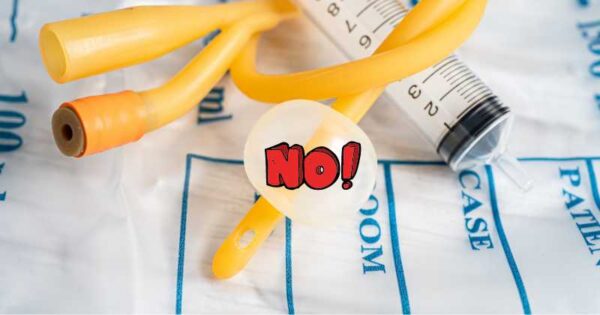
Can Your Refuse The Catheter
You can refuse absolutely ANYTHING in the hospital.
I talk about that in my pro tips for labor:
That doesn’t mean that there won’t be consequences, which is why it is really important to go over the risks and benefits of it with your provider before you make the choice to refuse it.
You need to be really mindful of the consequences:
Kidney Issues Missed: If you refuse it when we are checking kidney issues, your kidneys may shut down and we won’t know it until it might be too late.
Stopping Bedrest: If we have you in bed for a reason and you make the choice to get up or use a bedpan you could have consequences from that (like contractions starting, or more fluid leaking out).
Epidural Issues: If you have an epidural and refuse the catheter we may ultimately need to turn the catheter off if you’re unable to pee.
You need to be mindful that sometimes the epidural itself limits your ability to let go of those muscles and pee — it’s not just about movement to get up. You’re actually just not able to pee.
No Cesarean: Honestly, I’m not sure what would happen if you refuse it for a C-section. I’ve never seen it happen, but I’m not sure the providers would do it without one being placed…. It could ultimately mean that you’re refusing the cesarean section (as the doctors could do a lot of harm to your bladder).
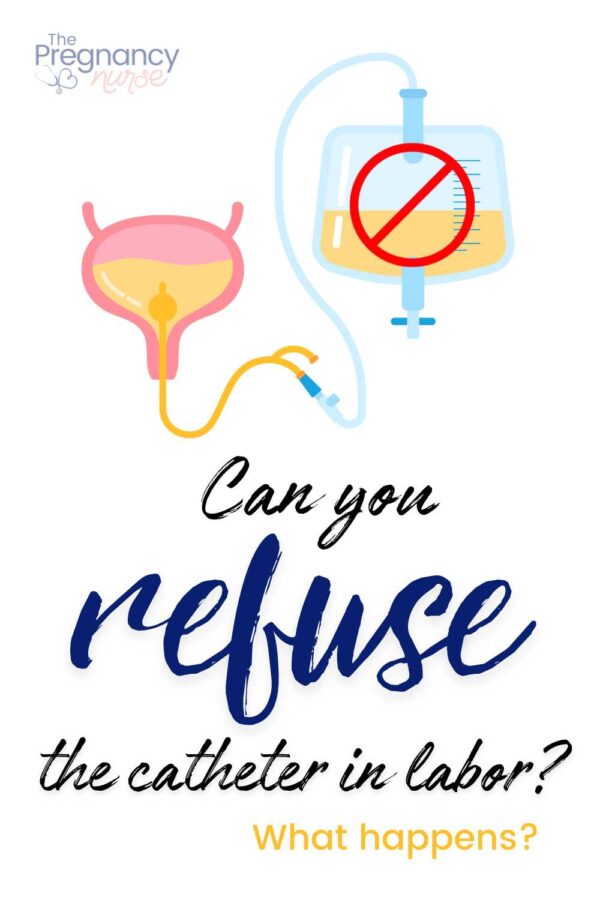
Ok, but there are some alternatives to the catheter…. so, what are they?
Are there Alternatives to the Catheter?
So, most often in L&D we place what’s called a foley catheter that has a balloon that keeps it in your bladder.
If that creeps you out, there is also the option to put a catheter in every 1-2 hours where it just goes up, drains out the urine, and then comes back out. It’s called a straight catheter.
Between those two options there hasn’t proven for one to be better than the other in terms of infection rates, etc. It’s sort of up to each patient which is better for them.
The main issue, for most patients, with having a catheter every few hours is that we have to re-do the catheter multiple times. Your nurse also needs to be very mindful of your bladder to make sure it’s not an issue.
It is a good option though, and if you think that will be more comfortable, definitely talk with your provider about it.
You might also be able to use a bedpan if you have an epidural. But, you’ll need to have a light enough epidural that you can lift your hips well (which may mean you feel some pain from contractions as well — check out my posts on the walking epidural on more on this one). You’ll also need to be able to relax your urinary muscles to let the urine flow.
It can be a viable option – you could try it an hour after the epidural is placed to see if you can do it.
However, you really won’t feel your bladder filling, so again — your medical staff will need to be on top of it and helping you use it.
Your medical staff can’t really “lift” you onto a bedpan. It gets tricky and can be dangerous for them — so be mindful that you will need to be able to lift those hips to make this work.
However, some of these alternative won’t replace a catheter — especially in things like a cesarean section. They don’t always work.
You COULD try to limit the time you have it in though. Many hospitals remove the catheter up to just 4 hours after a cesarean. You just need to be aware you’ll need to get up to a commode, use a bedpan or something to urinate after it’s out.

Why Refuse It?
I think it’s really important to communicate with your team about why you’re refusing it.
Are you scared to get it placed (normal to bring up a lot of feelings if you’ve had previous SA or something like that)?
Are you just grossed out by it (I get that, it’s very much an “out” hole for me too)?
Are you afraid of feeling it in there (not an issue with the epidural or the cesarean as you’re numb when we place it)?
Could we talk you through the process more so you’ll understand what will go on?
Telling us what the issue is can help us either decide how to help you through it better so you’re comfortable with it, or other things we could do.
But, as we have talked about, with things like a cesarean it may ultimately mean they can’t do the surgery. Hard to say what would happen — that’s above my paygrade.
Communication is ALWAYS the key.
Well, and understanding what will go on, and how it will feel after you have it (or will you feel it at all).
One of the things people love about The Online Prenatal Class for Couples is that I have a video showing HOW the catheter placement works (don’t worry, I just use cardboard) — so you really know what to expect. I do the same thing with an epidural — that time I place it on a Raggedy Anne doll.
Don’t let that stuff in the labor room just scare you, get informed so you feel ready for your big day!


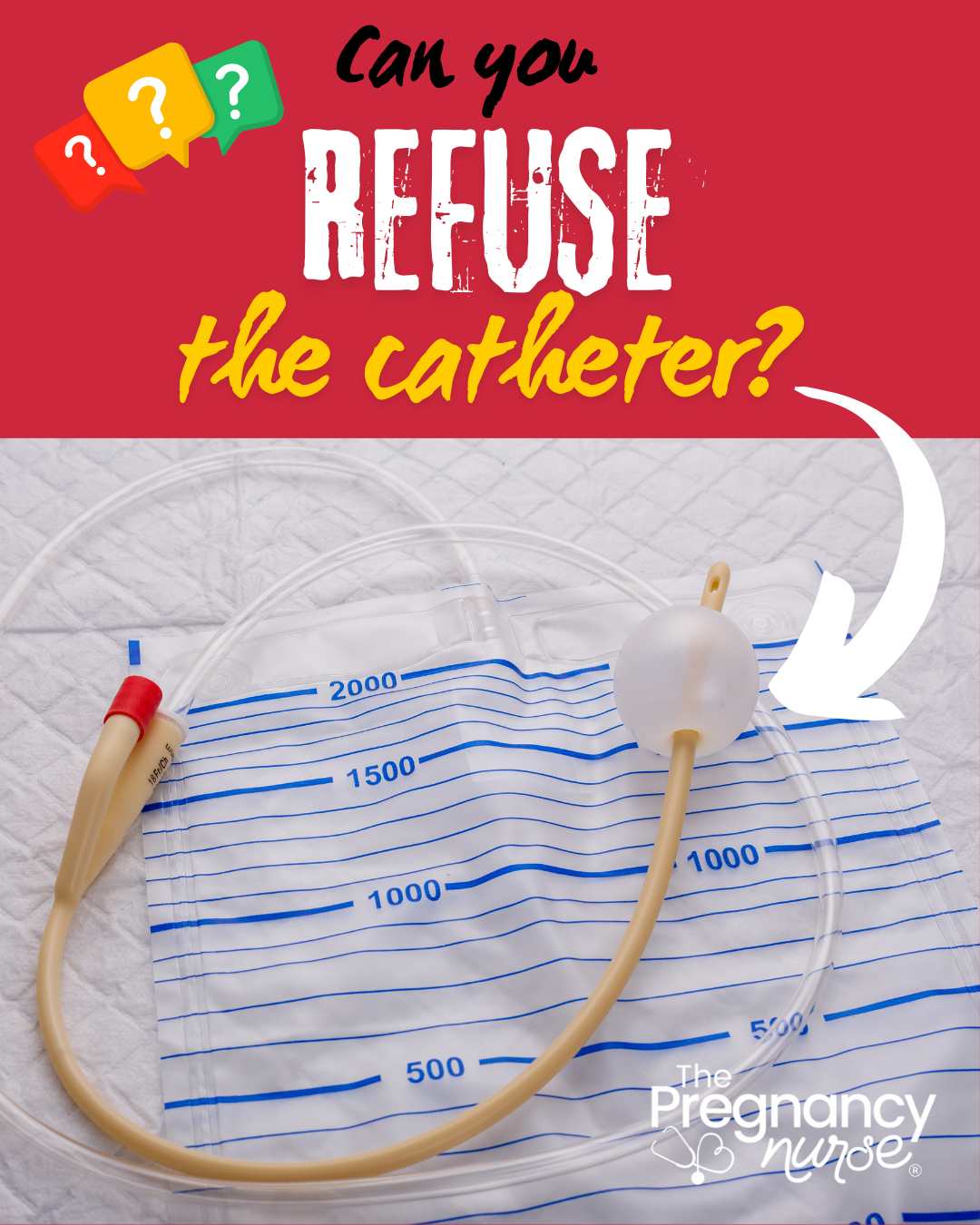
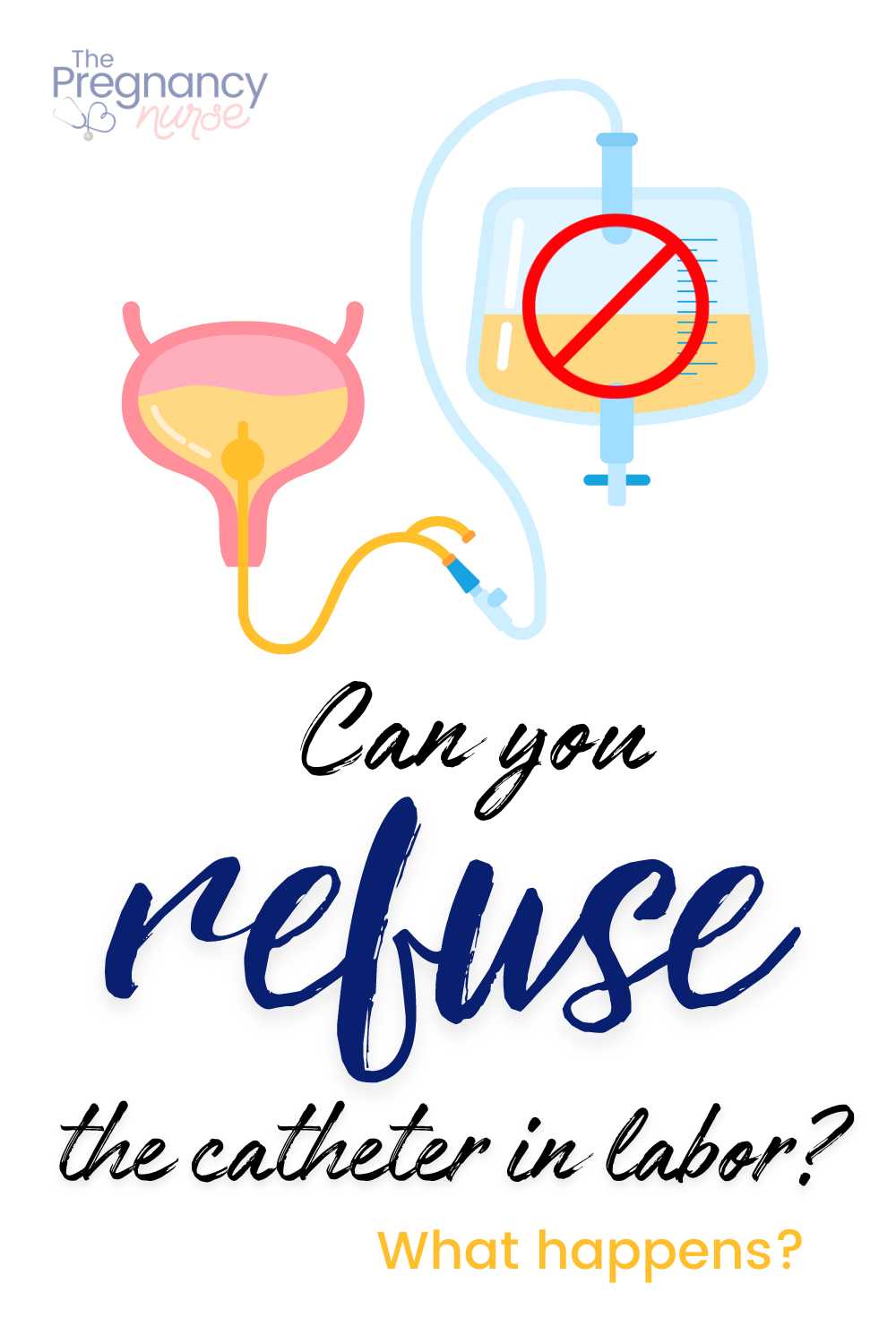
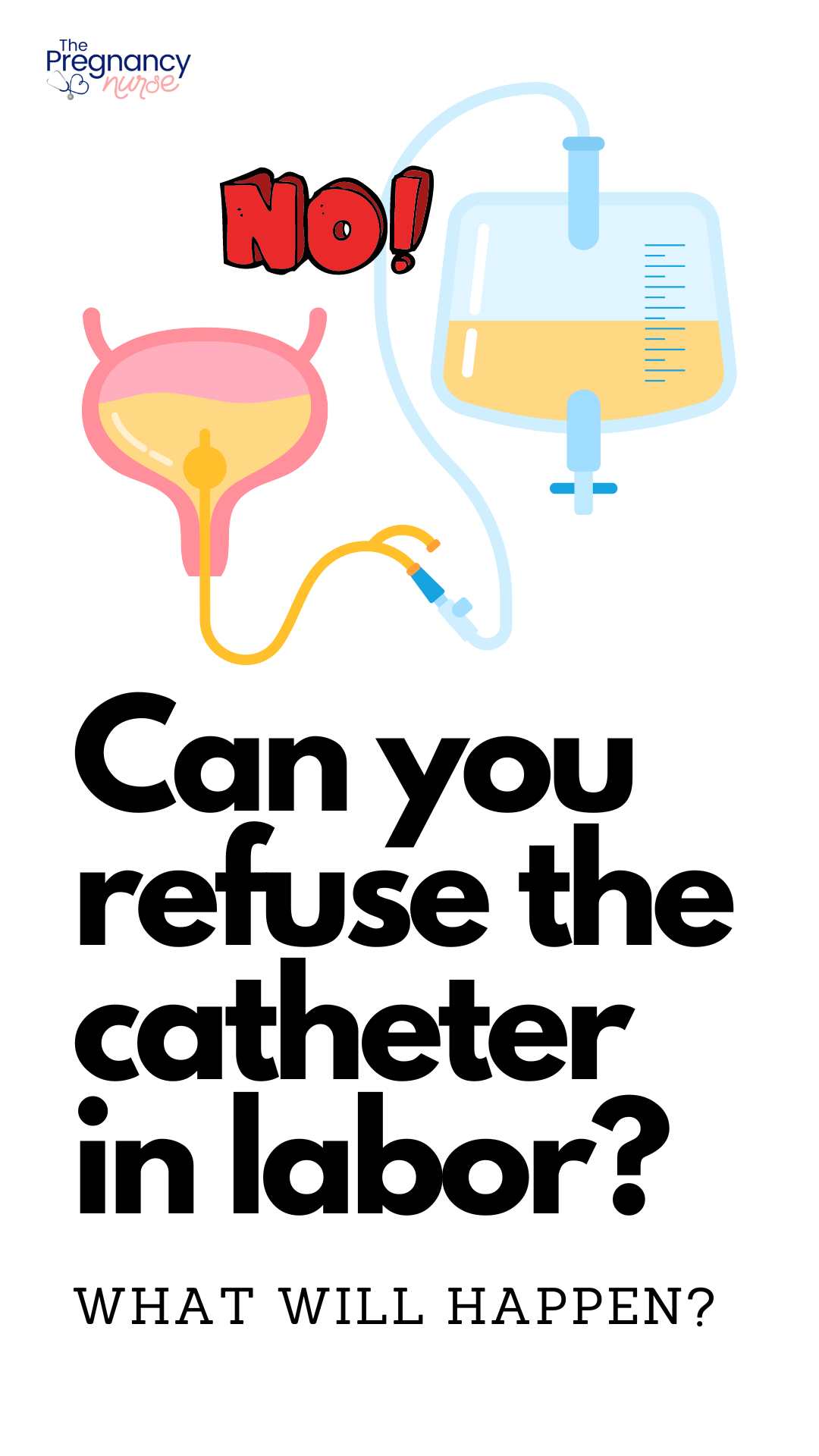
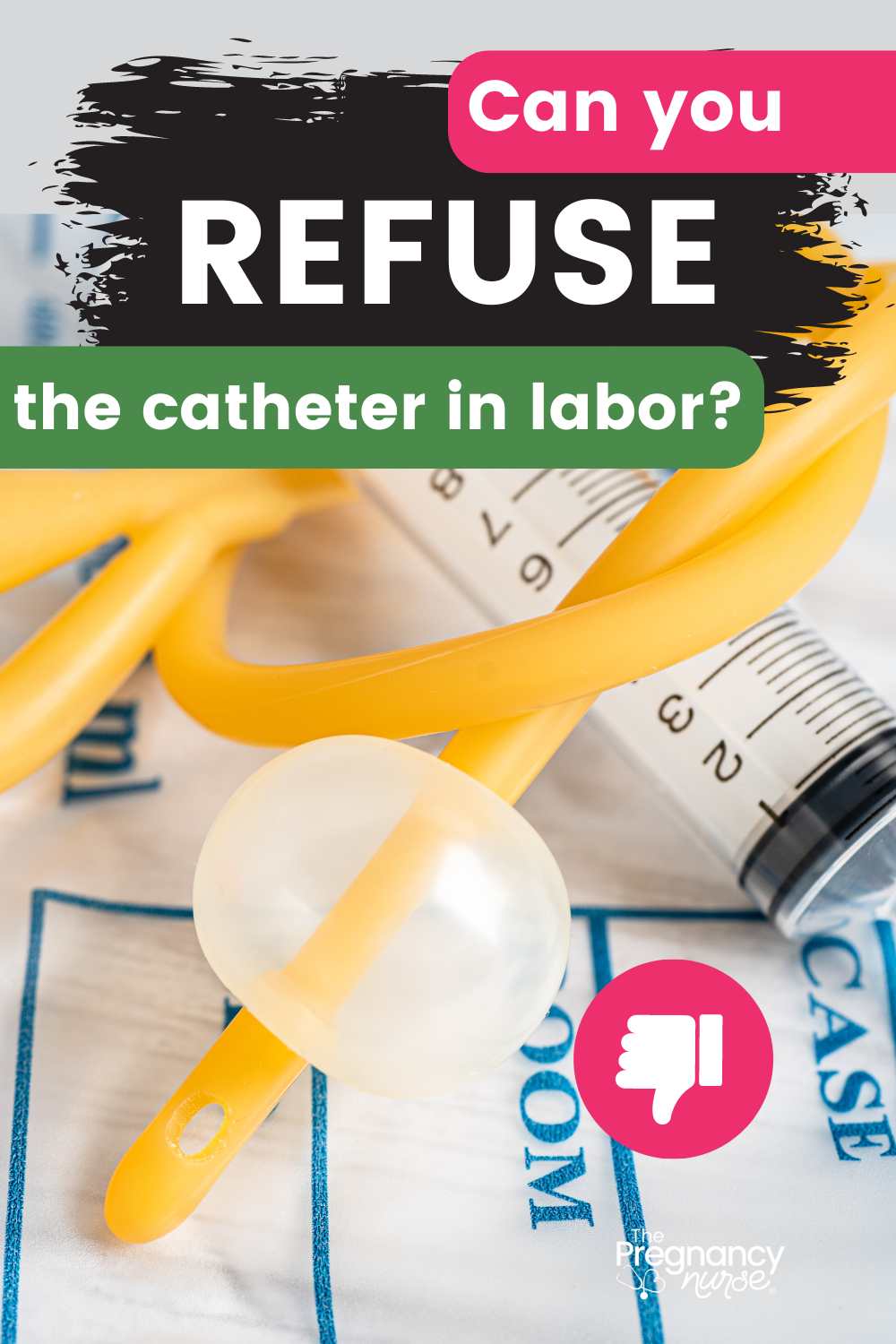
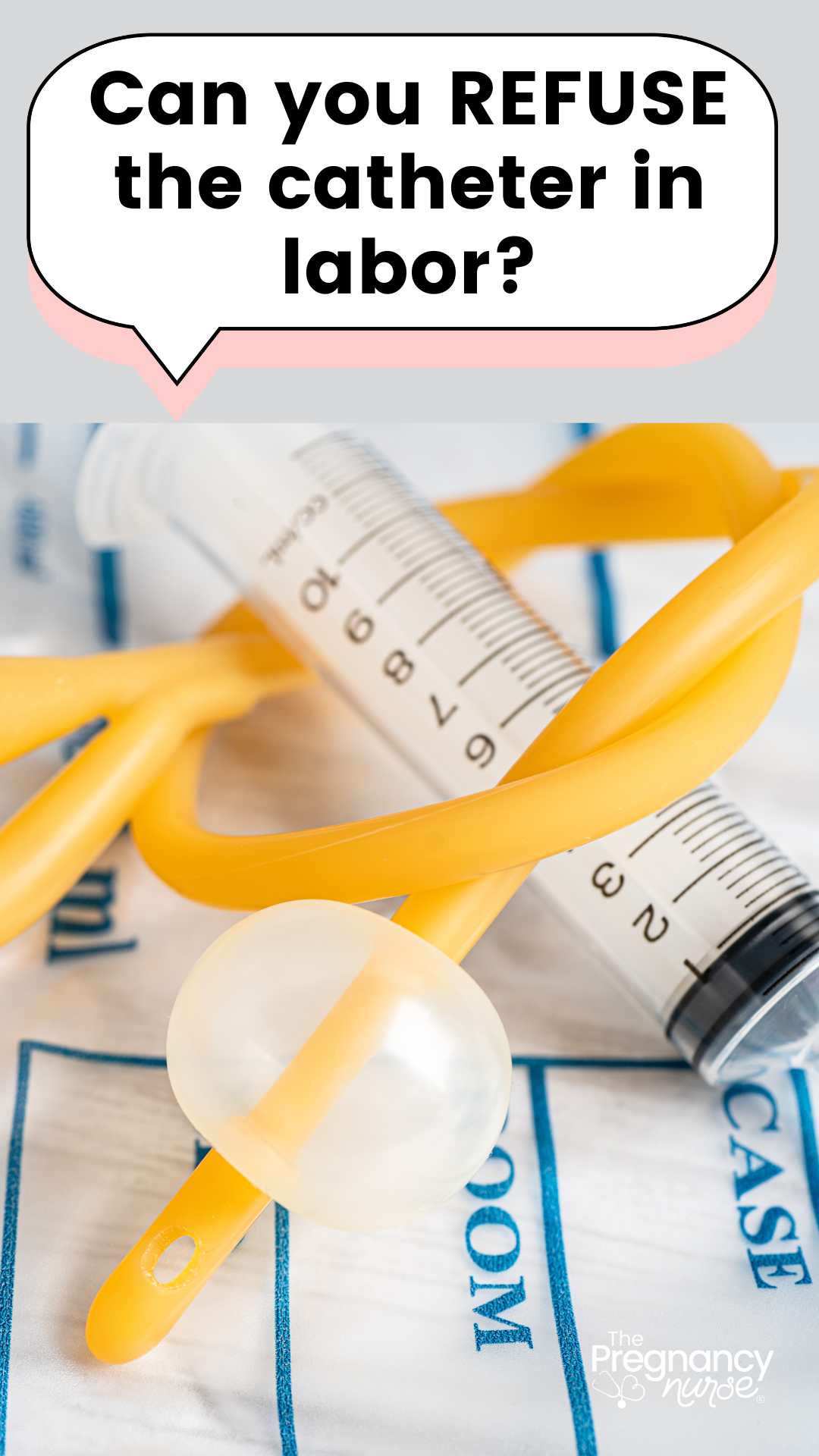




 To the Mom Who Thinks She’ll Go Early.
To the Mom Who Thinks She’ll Go Early.
